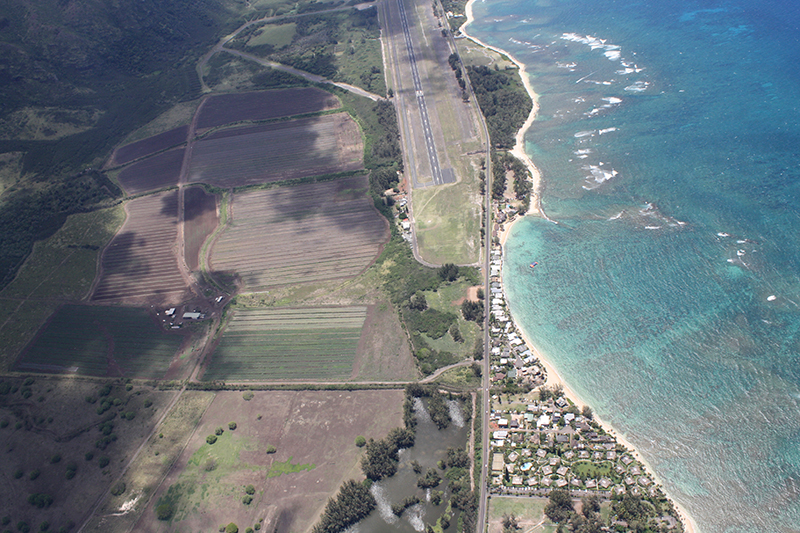Protecting coastal homes and businesses from the crashing waves of the sea may eliminate beach habitat for the threatened Hawaiian green sea turtle.
Known as honu by Hawaiians, the Hawaiian green sea turtle (Chelonia mydas) is classified as threatened under the U.S. Endangered Species Act despite a growing population. Its continued listing is in response to the potentially significant losses of nesting beaches due to sea level rise. New analysis presented Tuesday at the American Geophysical Union’s 2017 Fall Meeting in New Orleans, La., highlights the threat to turtle nesting habitat posed by coastal armoring in response to sea level rise.
Erosion caused by sea level rise is pushing beaches farther and farther inland, but the owners of homes and businesses along the coast are often more inclined to dig in than to retreat. The construction of coastal armor like seawalls and riprap can keep the shoreline from moving farther inland, but that doesn’t stop erosion. Instead, waves eat away at the beach until it disappears completely.
“It is detrimental to not only the beach but also the species that use that beach,” Jake Burstein, a geophysicist at the University of South Carolina in Columbia who worked on the study, told Eos. Prior research has also shown that seawalls actually accelerate beach loss and coastal erosion by providing a backstop for wave energy to dredge sand and rip it back out to sea.
Threat to Nesting Beaches
The team identified many Hawaiian beaches currently used by sea turtles for nesting and basking that could be lost as sea level rises in coming decades. In Hawaii property owners can apply for a special emergency permit if the shoreline is within 20 feet (6.1 meters) of their property. More often than not, these emergency permits lead to the construction of coastal armor, according to Burstein. The researchers used aerial photographs and historical beach erosion data to estimate the number of homes on an 18-kilometer stretch of Oahu’s North Shore that would be within the 20-foot proximity to the shoreline for different amounts of sea level rise.

Sea level rise of just 0.17 meter (0.55 foot) placed 31% of all beachfront homes within the 20-foot range, and a rise of 0.32 meter (1 foot) would bump that figure to 42%. Research cited by the team lists these sea level rise scenarios as “intermediate,” which means they may arrive before 2050. “Obviously, for those animals that depend on beaches for reproduction, sea level rise and loss of beach is a critical issue,” said Alan Bolten, a longtime sea turtle researcher at the University of Florida in Gainesville who was not involved in the research.
A Habitat of Increasing Importance
More than 90% of Hawaiian green sea turtles nest in the French Frigate Shoals, an atoll in the northwestern Hawaiian Islands that is less than 2 meters above sea level. “When you have just a sand atoll or island in the South Pacific, there is no place to go—no highland upland areas that can become future beaches,” said Bolten. With this crucial nesting habitat in immediate danger of disappearing beneath the waves, the nesting beaches elsewhere in the Hawaiian Islands take on increased importance, he said.
The researchers said decision-makers need to address these issues before it’s too late. They should create plans for coastal development and Hawaiian green sea turtle management that ensure key Hawaiian beaches are not lost, said Burstein. “Even though the population is increasing now, you have to take a long range view,” said Bolten. “The future is not very positive if you think about the important nesting habitat [that] could be lost in coming decades.”
—Alex Fox (email: [email protected]; @Alex_M_Fox), Science Communication Program Graduate Student, University of California, Santa Cruz
Citation:
Fox, A. (2017), Threatened sea turtles in Hawaii losing ground to rising oceans, Eos, 98, https://doi.org/10.1029/2017EO089065. Published on 14 December 2017.
Text © 2017. The authors. CC BY-NC-ND 3.0
Except where otherwise noted, images are subject to copyright. Any reuse without express permission from the copyright owner is prohibited.

